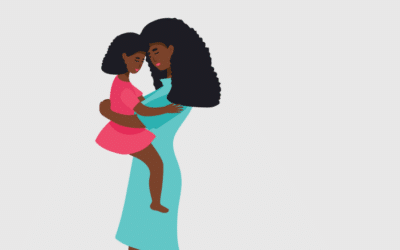Did you know that June is Post-Traumatic Stress Disorder (PTSD) Awareness Month? It’s true! And it’s the perfect time for a bit of education! You see, the impact of trauma can run deep. It can shape how we think, feel, and interact with others.
Post-traumatic stress disorder is a condition that develops in response to highly stressful, traumatic events. It affects roughly 8 million Americans every year and knows no age or gender boundaries. It impacts many of the kids we serve, their caregivers, and even our friends and family members.
Listen as Vietnam veteran Ron Whitcomb discusses his experience with PTSD after coming home from the war in the late 1960s.
So, what is post-traumatic stress disorder? It’s a mental health condition, often resulting in flashbacks of trauma, nightmares, intrusive thoughts, anxiety, avoidance, and changes in mood or thinking.
And you know what? It doesn’t just affect war veterans! The diagnosis plagues victims of abuse, violence, and even those who lose a loved one suddenly. Moreover, those who experience it are at greater risk for:
- Depression and anxiety
- Issues with drug and alcohol use
- Eating disorders
- Suicidal thoughts and actions
That said, let’s take a deep dive into the symptoms of PTSD.
Intrusive memories
Symptoms of intrusive memories may include:
- Recurrent, unwanted distressing memories of the traumatic event
- Reliving the traumatic event as if it were happening again (flashbacks)
- Upsetting dreams or nightmares about the traumatic event
- Severe emotional distress or physical reactions to something that reminds you of the traumatic event
Avoidance
Symptoms of avoidance may include:
- Trying to avoid thinking or talking about the traumatic event
- Avoiding places, activities, or people that remind you of the traumatic event
Negative changes in thinking and mood
Symptoms of negative changes in thinking and mood may include:
- Negative thoughts about yourself, other people, or the world
- Hopelessness about the future
- Memory problems, including not remembering important aspects of the traumatic event
- Difficulty maintaining close relationships
- Feeling detached from family and friends
- Lack of interest in activities you once enjoyed
- Difficulty experiencing positive emotions
- Feeling emotionally numb
Changes in physical and emotional reactions
Symptoms of changes in physical and emotional reactions (also called arousal symptoms) may include:
- Being easily startled or frightened
- Always being on guard for danger
- Self-destructive behavior, such as drinking too much or driving too fast
- Trouble sleeping
- Trouble concentrating
- Irritability, angry outbursts, or aggressive behavior
- Overwhelming guilt or shame
For children 6 years old and younger, signs and symptoms may also include:
- Re-enacting the traumatic event or aspects of the traumatic event through play
- Frightening dreams that may or may not include aspects of the traumatic event
Want more?
Click here to learn more about everything from the causes of PTSD to its treatment and how it affects kids.
If you enjoyed this article, check out the rest of our blog today and make sure to follow us on social media. You can find us at youthdynamicsmt on Instagram, or Youth Dynamics of Montana and People of Youth Dynamics on Facebook.






